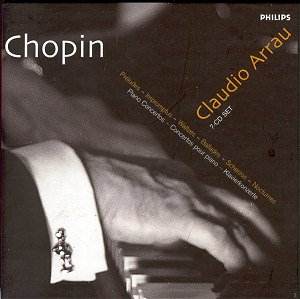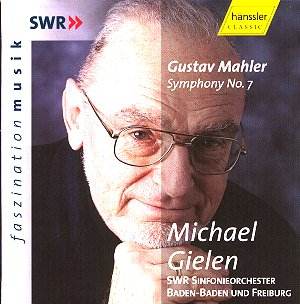 Composer: Frédéric Chopin
Composer: Frédéric Chopin
Works: Preludes, Impromptus, Waltzes, Ballades, Scherzos, Nocturnes, Piano Concerto No. 1 in E minor, Piano Concerto No. 2 in F minor
Performers: Claudio Arrau (piano), London Philharmonic Orchestra, Eliahu Inbal (conductor)
Recording: Preludes: The Netherlands, April 1973; Impromptus: Switzerland, August 1980; Waltzes: The Netherlands, March 1979 and August 1980; Ballades: The Netherlands, April 1977; Scherzos: Germany, April 1984; Nocturnes: The Netherlands, March 1978; Concertos: London, October 1970
Label: Philips 468 391-2
Frédéric Chopin’s oeuvre, particularly his solo piano works and concertos, remains a cornerstone of Romantic music, reflecting profound emotional depth and technical brilliance. This collection of Chopin’s Preludes, Impromptus, Waltzes, Ballades, Scherzos, Nocturnes, and both Piano Concertos, performed by the distinguished Chilean pianist Claudio Arrau, offers a comprehensive survey of the composer’s output. Arrau, whose illustrious career spanned much of the 20th century, brings to this anthology not only his exceptional technical prowess but also a deep intellectual engagement with the music, shaped by his lineage to the great 19th-century tradition.
Arrau’s interpretative choices throughout this collection reveal a pianist deeply attuned to the nuances of Chopin’s language. His rubato—a hallmark of his style—serves to enhance the expressivity of the melodies without compromising their structural integrity. For instance, in the Nocturne in E-flat major, Op. 9 No. 2, Arrau’s subtle shifts in tempo breathe life into the lyrical line, creating an intimate dialogue that resonates with the listener. The Preludes, particularly the famous No. 4 in E minor, showcase his ability to balance the poignant despair inherent in the piece with a sense of transcendence, achieved through meticulous attention to voicing and dynamic shading.
The technical aspects of Arrau’s performance are complemented by the sound quality of the recording, which captures the full spectrum of his piano’s tone. The engineering is commendable; the clarity of individual lines in the left-hand accompaniments, alongside the ethereal quality of the right-hand melodies, is particularly evident in the Ballades. In the Ballade No. 1 in G minor, the climactic passages are rendered with an orchestral grandeur that belies the solo nature of the performance, an effect enhanced by the sensitive accompaniment of the London Philharmonic Orchestra under Eliahu Inbal. The orchestral colors are vividly realized, with particularly notable contributions from the brass and woodwinds, which enrich the soundscape without overshadowing the piano.
Comparatively, while many contemporary pianists offer their interpretations of Chopin’s works, few rival Arrau’s ability to convey a sense of both the historical context and the emotional weight of the music. His approach stands in contrast to more modern interpretations that may prioritize speed and technical fireworks at the expense of expressive depth. In the Scherzo No. 2 in B-flat minor, for instance, Arrau’s nuanced articulation and sense of phrasing reveal a thoughtful engagement with the music, allowing for a broader spectrum of emotional expression than is often the case in more contemporary renditions.
This recording not only showcases Arrau’s artistry but also serves as a vital document of the interpretative traditions that shaped Chopin’s music during the 20th century. The culmination of these performances across the span of 15 years illustrates a dedicated exploration of Chopin’s multifaceted genius. Each work, while distinct in character, contributes to a cohesive narrative of the composer’s emotional landscape, illuminated by Arrau’s distinctive interpretative voice.
The collection stands as a testament to Claudio Arrau’s legacy as one of the preeminent interpreters of Chopin, blending technical brilliance with profound musical insight. It is an essential acquisition for any serious aficionado of classical piano music and provides a compelling exploration of Chopin’s artistry through the lens of one of the last century’s great pianists.



